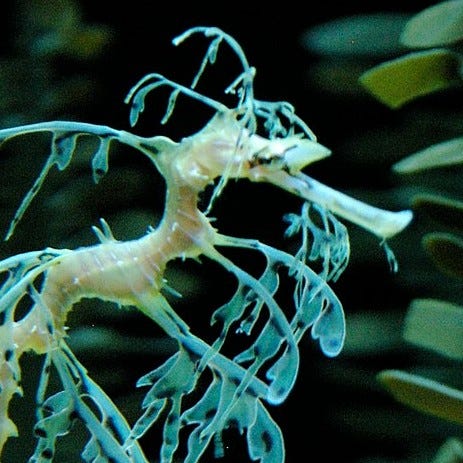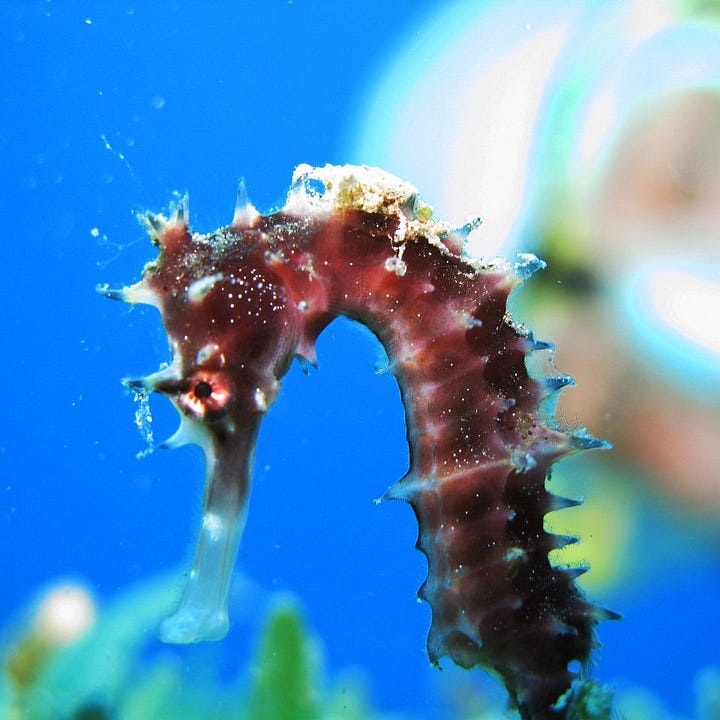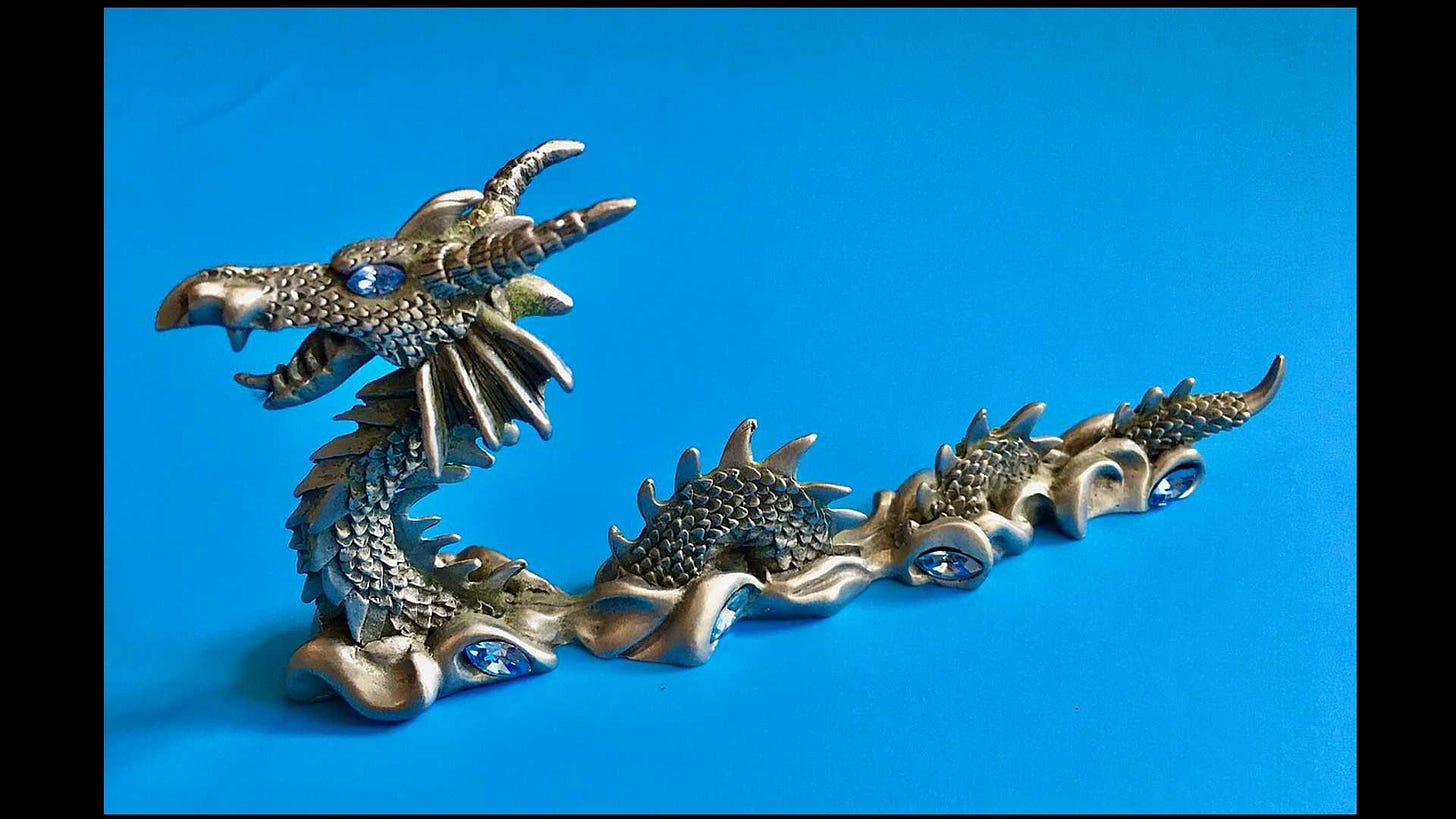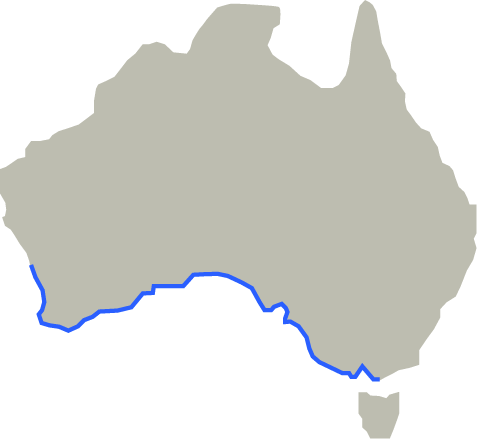There is a fish in Australia called a dragon, but he is not quite the biblical Leviathan the Book of Job mentions as the most menacing creature in the seas (40:25-41:26).
In fact, the Leafy Sea Dragon is quite delicate, a frilly creature, hardly distinguishable from the kelp seaweed beds which are his natural habitat. I’m sure he is actually one of the least frightening dragons of history!
But you’ll have to admit that he is a pretty amazing creation of God, a sacred window into the Lord’s creative instincts and artistic sense of humor.
Fight or Flight
It is said that nature equips creatures with the “fight-or-flight” survival instinct, but the Leafy Sea Dragon seems curiously devoid of both.
He doesn’t fight at all. How could he, dressed like that? Who would take him seriously? He’d probably look like Liberace shaking his handkerchief at a bully.
Luckily, he has no natural predators, although a random hungry big fish will target him every now and then. But I can’t imagine it would be a pleasurable dining experience, since the dragon fish has dense, plate-like side walls with some spiky things sticking out all over the place that would get stuck in any predator’s throat.
As to flight, he may be a dragon, but he’s not a speed demon by any stretch of the imagination. A marine biologist once clocked a leafy sea dragon speeding at a little over 400 feet per hour. This species has been known to sit still for three days straight. Not exactly Mario Andretti.
He’s so non-threatening that he doesn’t even have teeth, jaws, or claws. He eats plankton and some species of nearly microscopic shrimp that he can suck into his tube-like snout.
If he has any natural defense mechanism, it’s his camouflage, which is absolutely brilliant! It seems tailor made for the territory he roams around in, which is all that leafy, luxuriant seaweed in the reefs off the coast of southern Australia. Perfect!
Can you spot the dragon in this picture?
Oh, look. There, he moved!
A Family Man
You’re probably thinking an unusual creature like this would be in a biological category of his own, but the Leafy Sea Dragon is actually a member of a pretty well-known and fun family: the seahorses. You can see the resemblance quite clearly in the images below, although the elegant sea dragon is rarely seen hobnobbing with his trailer park cousin.
He’s a bit snobby about it too. His attitude is that horses are for riding … but dragons, well, they’re for admiring. Ha!


One family trait the two species have in common is the male’s unique role in gestating their young. Amazingly, the male seahorses hold the fertilized eggs in a pouch in their abdomen for 4 to 6 weeks until the hatchlings are ready to enter the world. The sea dragon, for his part, keeps as many as 300 eggs tucked in a special compartment under his tail.
No deadbeat dads among this breed.
Denizens of the Down Under
The Leafy Sea Dragons are only found in one place in the world: off the southern coast of Australia. (I probably don’t need to tell you that the place is full of mysterious and hilarious creatures.)
They may dive down to about 100 feet of water in certain parts, but they prefer the temperate shallower waters around sand bars and kelp patches as well as protected bays. Who can blame them?
Thankfully, Australia has declared them a protected species because humans, of course, are their greatest danger through pollution and poaching. They also get caught in fishing nets from time to time, which is understandable given their dozens of leafy extensions that nets can latch onto.
Honestly, sometimes you look at God’s creations and you just say, “Wow.” The Leafy Sea Dragon is definitely one of those works of art.
Enjoy this short video of less than two minutes that will show you how they swim (actually, float!) and give you some other fun facts about these marvelous creatures.
Facts: The Leafy Seadragon (1:50)
---
Photo Credits: Feature Image via Wikimedia (Lambtron); Head shot (pelican from Tokyo); Seahorse (Bernd); Full fish (James Rosindell); Camouflage Pictures (Peter Southwood); Map (Cowdy001).










How do you find all these? Great, Peter.
Only one word: Beautiful